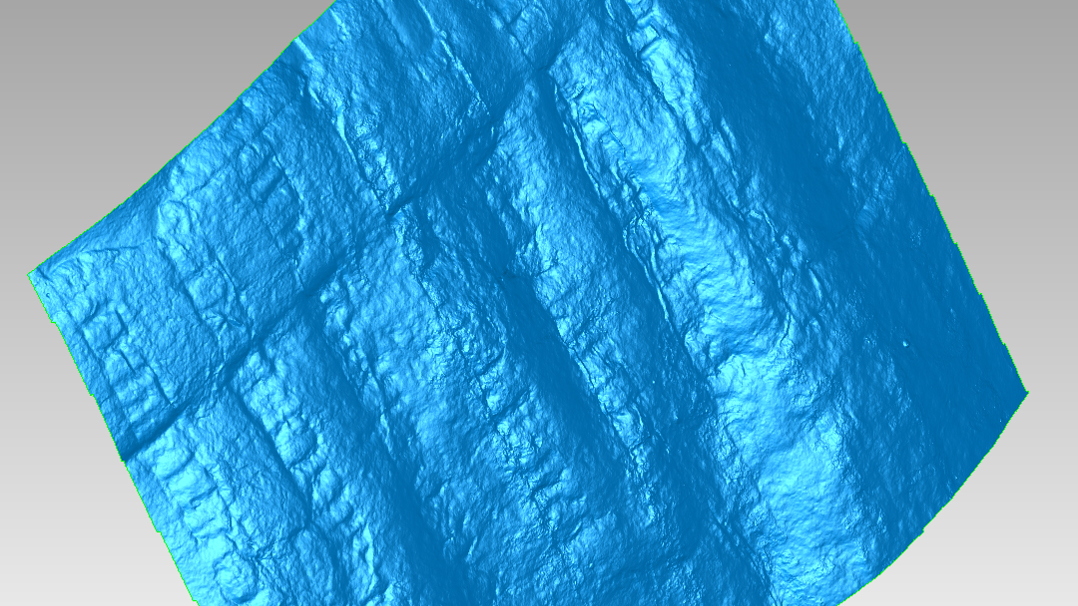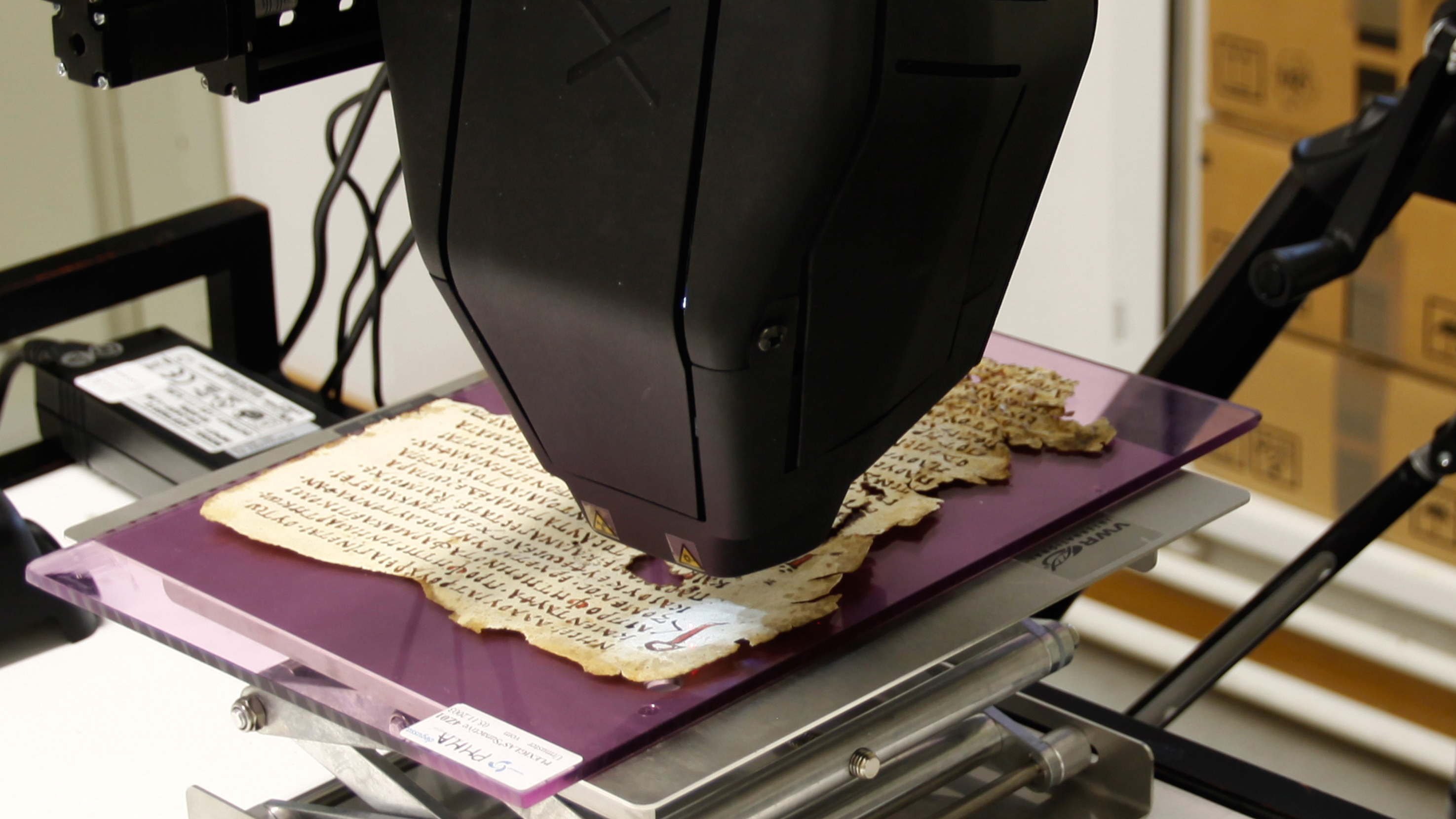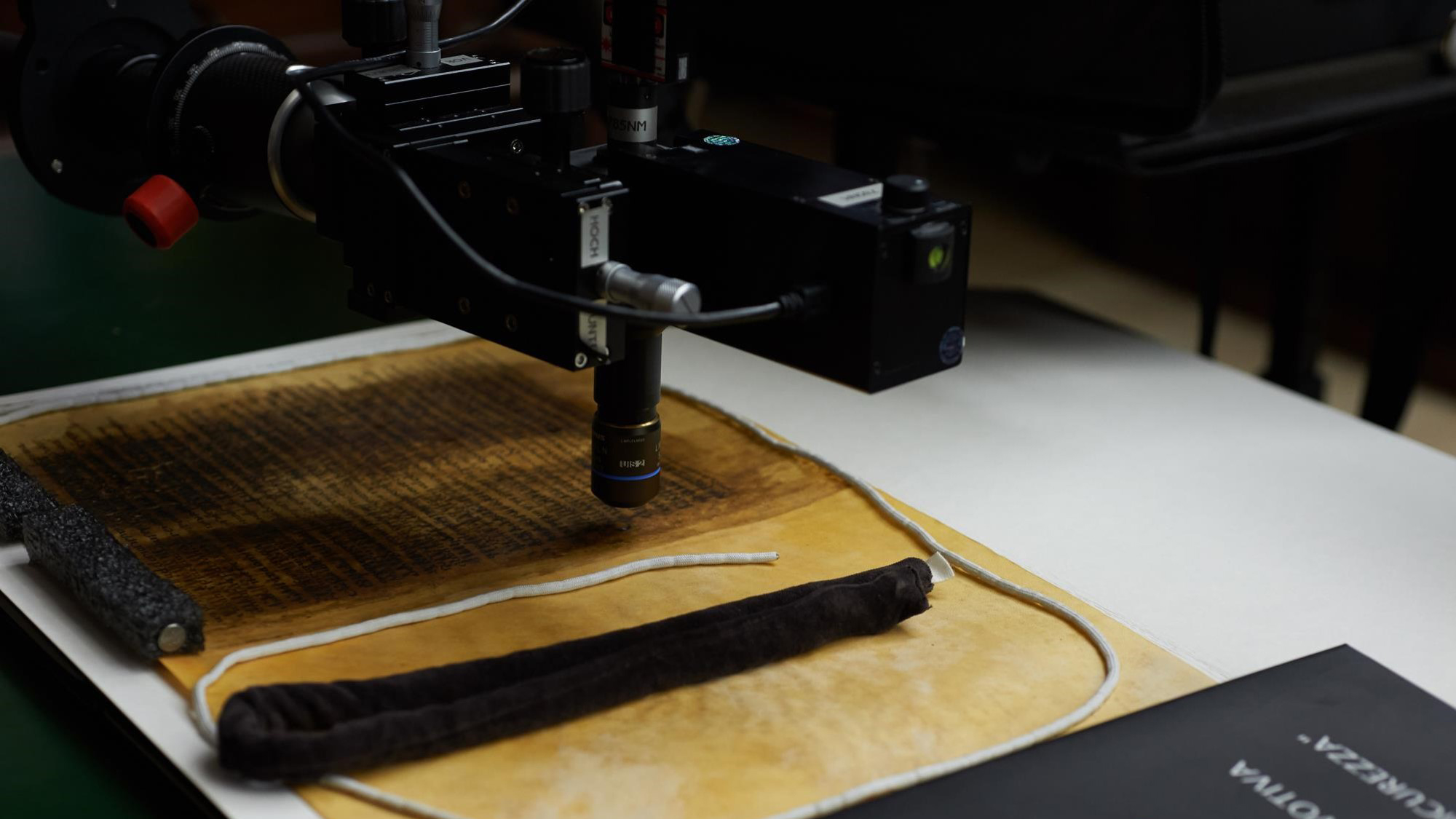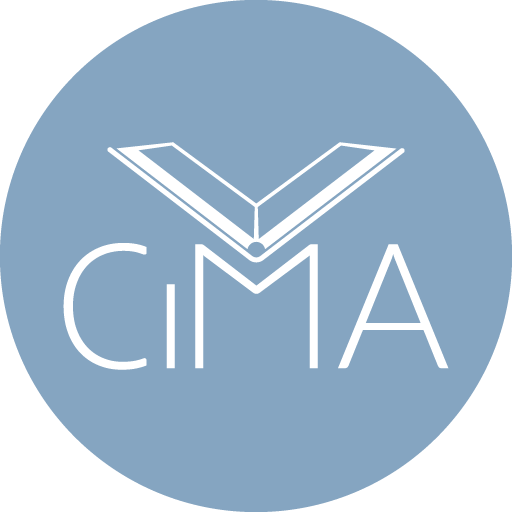CIMA: Your partner for non-invasive cultural heritage analysis
Based in Vienna, operating anywhere. InquiryScientific Imaging

Multispectral Imaging
Images of high spatial resolution taken under wavebands of the ultraviolet, visible and infrared range provide the basis for revealing faded script, palimpsests and underdrawings.

Hyperspectral Imaging
Extending the spectral resolution to >200 bands allows the measurement of an accurate reflection spectrum for each pixel of an imaged area, thereby enabling pigment identification.

3D Reconstruction
Structured light scanners for the reconstruction of plastic objects, Photometric Stereo for fine details of planar surfaces.
We don’t stop at acquisition. The Computer Vision Lab of the TU Wien specializes on image processing, pattern recognition and machine learning to get the most out of your data.
Spectroscopic Material Analysis

XRF Spectroscopy
X-Ray Fluorescence spectroscopy is used to detect chemical elements. Fast and reliable, it is often the first step in analysing the chemical composition of an object.

rFTIR Spectroscopy
Fourier Transform Infrared Spectroscopy is a compoind-specific method. It complements XRF spectroscopy by allowing the identification of chemical compounds.

Raman Spectroscopy
Raman Spectroscopy is another compound specific method which is especially useful for distinguishing between pigments of the same color but with different chemical composition.
Conservation & Restoration
Patricia Engel (Danube University Krems) offers expertise in:
- conservation, conservation concepts (including comprehensive storage concepts, pest management and climate monitoring) and practical conservation treatment for individual cultural heritage items, such as books, charters, prints and drawings made of paper, parchment and leather, and also for entire collections and libraries.
- Her participation in research projects on the topic conservation of cultural heritage items, in particular graphic arts and written heritage at any level and in any aspect, guarantees new research in the respective field. Engel has been actively publishing on the theory, philosophy and technology of conservation and been engaged in developing university curricula on conservation in Europe and beyond.
